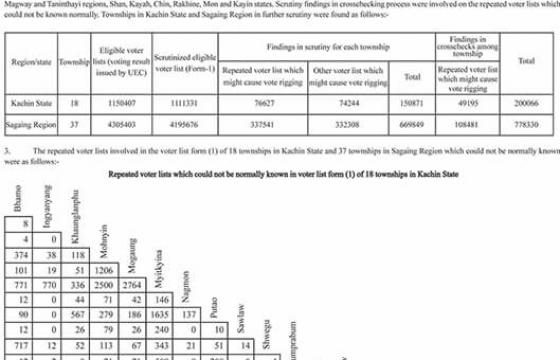The two most crucial issues that would definitely be carried into the year 2017 are the conflict between the Rohingya – the government proposed term is “Muslims from Rakhein State” and Military or Tatmadaw, including Arakan nationalist labeled them “Bengali” – and the conflict between the Ethnic Armed Organizations (EAOs) and the Military.
International condemnation of National League for Democracy (NLD) regime has been on the rise since the abrupt explosion of Rohingya uprising in Arakan State that occurred on 9 October was met with massive retaliation response by the Tatmadaw, which led to the accusation of inhumane rights violations on the said Muslim population.
Parallel to this is the fierce armed conflict of some two weeks that started on 20 November in the northern part of the country between the Tatmadaw and the Ethnic Armed Organizations (EAOs), in Kachin and Shan States.
While media coverage gives more visibility to the plight of the Rohingya population by rights groups like Amnesty International (AI) and Human Rights Watch (HRW), including Muslim countries like Malaysia, Indonesia and lately the United Nations High Commissioner for Human Rights, the armed ethnic conflict in the country’s north is under-reported.
Even then, one common denomination is what the AI statement concluded that the NLD government has no influence over the Military and could not control it might be the real source of all the difficulties for not being able to resolve the conflicts, both in Arakan and the two northern states of the country.
Rafendi Djamin, Amnesty International’s Director for Southeast Asia and the Pacific, recently said:
“While the military is directly responsible for the violations, Aung San Suu Kyi has failed to live up to both her political and moral responsibility to try to stop and condemn what is unfolding in Rakhine state.”
The escalation of conflict in the north is because of the Tatmadaw’s military pressure to push the Kachin Independence Organization/Army (KIO/KIA), employing months-long military onslaught on its positions in Kachin State, to sign the Nationwide Ceasefire Agreement (NCA), which latter responded by hitting back the Tatmadaw positions in Muse Township area of northern Shan State that borders China, together with the MNDAA, TNLA and AA, which now called itself the Northern Alliance-Burma (NA-B).
The reasoning was to take the heat away from embattled KIA in Kachin State, by employing the strategy of “The best defensive is the offensive” and perhaps to hit the enemy where it hurts most, plus showing their displeasure for being sidelined by the government in the peace process.
Thereafter, the Tatmadaw tried to label the NA-B as terrorists organizations, once within the union parliament that was shot down. But the same motion within the Shan State parliament sailed through. At the same time, it heightened it’s offensive in Kachin State targeting KIA mountain bases near Laiza, it’s headquarters. The Tatmadaw was able to captured Gideon mountain outpost and another one some eight kilometers away from Gideon in Waingmaw Township, using airstrikes, artillery and hundreds of infantry troops.
This face-saving undertaking, as the NA-B coordinated offensives showed the Tatmadaw’s inability to protect its controlled areas, cost to overrun an isolated mountain outpost manned by just some 20 to 50 KIA fighters was said to be tremendously high.
According to a recent report by The Irrawaddy on the Tatmadaw’s victory, “The ex‐officer from the Burma Army estimated the death toll of the Tatmadaw as 400 to 500 Burmese soldiers in the fight for Gideon alone; the same source suggested 20‐30 KIA casualties, citing a KIA advantage due to their defensive positioning and familiarity with the terrain.”
The financial cost must also be very high as the report said, “Seizing Gideon likely cost the Burmese military millions of dollars. A regional security analyst with British security and defense publisher IHS Jane’s Information Group estimated the cost of a 227‐kg air‐dropped bomb to be around US$2,000, not including aircraft fuel and maintenance costs. A case of 120‐mm rounds of mortar shells cost $4,000 per case.“
The report pinpointed that as of mid‐December, there had been more than 2,000 rounds of shelling, according to sources on the ground.
Following this, a rally to support the Tatmadaw’s war on the EAOs was held in Rangoon, emphasizing that the EAOs could not be negotiated and that the war is a justified one.
Meanwhile the Tatmadaw and the government’s National Reconciliation Peace Center (NRPC) were said to be making overture again to negotiate with the NA -B which still need to be agreed upon.
The first Chinese mediation last month in China shattered as the Military didn’t want to meet the alliance as a group but individually. This time around the NA-B is sticking to the old proposal to meet as a group again including the involvement of United Wa State Army (UWSA) as a witness. At this writing no agreement has still been made.
Analysis
The problematic in Arakan with the Rohingya population is more than a communal strife with regional and international dimension.
The lobby to exclude the Rohingya from becoming an acceptable indigenous people seems to be having an edge, as the Arakanese and as well many within the country were buying the notion that they are illegal immigrants from neighboring country.
In relation to this an attempt to rewrite the history is on the agenda, notwithstanding the U Nu era recognition of Rohingya as one of the ethnic group in the sixties. After General Ne Win came to power through the military coup in 1962, citizenship and all the privilege granted were revoked and treated the Rohingya as illegal immigrants again until today.
Against this backdrop, the Rohingya’s spontaneous uprising is seen as a natural reaction to the oppression and excluding policy of the successive military governments, possibly opening up a leeway to a larger conflict involving the Islam radical entering the fray, as speculated by the International Crisis Group (ICG) and even noted observers. But if this is going to be the case is anybody’s guess for the time being.
But one sure thing is that appropriate solution and implementation have to wait for quite a while, as racism tendency and angst for illegal immigrants or foreigners flooding the Arakan State is very much on the mind of the people.
The Rohingya, on the other hand, cannot just fade away only because they are unwanted. For the time being, the notion of Rohingya being illegal immigrants seems to be upheld by the NLD regime, using and agreeing to the 1823, one year after the first wave of British colonization, as a timeline to determine whether an ethnic group is indigenous, national or not. The Rohingya naturally also has arguments that their ancestors were settled there before the said timeline.
The government is likely pushing the problem to be resolved within the context of humanitarian facet, while the Rohingya would definitely asked for a place to be recognized as an ethnic group.
As it is now, a wider conflict resolution mechanism is needed to address the worries from both spectrum of the interest groups but would take time to come up with a comprehensive solution, at least for the moment.
But as for the conflict in the north and generally where the Tatmadaw and EAOs conflicts are concerned, there are a set of solution which could be applied, if there is a political will to do so.
To put it differently, they are to tackle the problems of two-tier administrative system and the two-pronged approach to the issue of national reconciliation.
While the first one could be resolved by thrashing out the policy differences between the Tatmadaw and the NLD, rather than each going it’s own way, the second one would be to abandon the two-pronged posture of the government and military.
Short of demanding that the Military conform to the civilian government of Aung San Suu Kyi, Hkun Htoon Oo, head of the Shan Nationalities for Democracy (SNLD) told a gathering on 17 December, according to Eleven Media Group: “The government should have talked with the military. The government has the executive branch and Parliament. The other one [defense services] has defense [ministry], border affairs [ministry] and home affairs [ministry]. It’s like there were two authoritative bodies in Myanmar. So, I think the government and the military should negotiate thoroughly before discussing peace with ethnic groups.”
Adding confusion to the lack of common stand between the government and military, the two-pronged approach, applied by the two coalition partners, either intentionally or unintentionally, of “carrot” and “stick” has preempted any trust-building process that might have taken place. In other words, while the military is coming down hard on the KIO and its allies, the NLD is negotiating ways to include the non-signatory EAOs into the peace process, through talks of possible give-and-take with the United Nationalities Federal Council (UNFC), the seven ethnic army alliance.
The case in point is the backlash that two-pronged has produced instead of winning over the EAOs to sign the NCA, it only produces the opposite result. The military offensives to press for the signing of NCA by the KIO has been met with counter offensives from the NA-B, of which the KIO is a leading figure and also the head of the UNFC.
Therefore, the said two main obstacles of two-tier administration mode and two-pronged approach that contradict with each other need to be addressed and altered. Otherwise, we all will be wading and muddling through, like we have been doing for the past five years.






